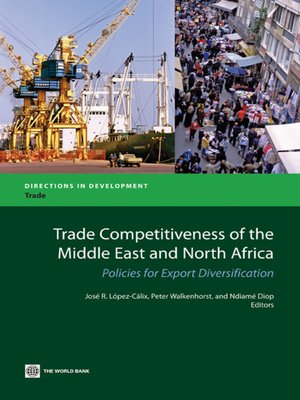Trade Competitiveness of the Middle East and North Africa
ebook ∣ Policies for Export Diversification · Directions in Development
By José R. López-Cálix

Sign up to save your library
With an OverDrive account, you can save your favorite libraries for at-a-glance information about availability. Find out more about OverDrive accounts.
Find this title in Libby, the library reading app by OverDrive.



Search for a digital library with this title
Title found at these libraries:
| Library Name | Distance |
|---|---|
| Loading... |
Over the past decade, four major developments in global economic integration have shaped trade policy and the economic performance of countries within the Middle East and North Africa region: the emergence of global supply chains, the growth of trade in services, the rise of China and India as major international trading powers, and regional integration. These developments, along with the labor and natural resource endowments of particular countries (some are resource-poor but labor-abundant, some resource-rich and labor-abundant, and some resource-rich and labor-importing), have influenced export diversification outcomes across the region. Yet these countries may not be taking full advantage of all of the opportunities the four new trends offer to them. 'Trade Competitiveness of the Middle East and North Africa: Policies for Export Diversification' examines the region's trade policy agendas and their results by focusing on the countries' response to these four key developments in international trade. As the region recovers from the global financial and economic crises, the book identifies reforms that could allow countries to further strengthen global production networks, benefit more from trade in services, better compete in external markets to face the rise of China and India, and reach the full potential of regional integration. If thoroughly implemented, especially by oil exporters, all of these reforms could help boost growth and job creation in the region.







